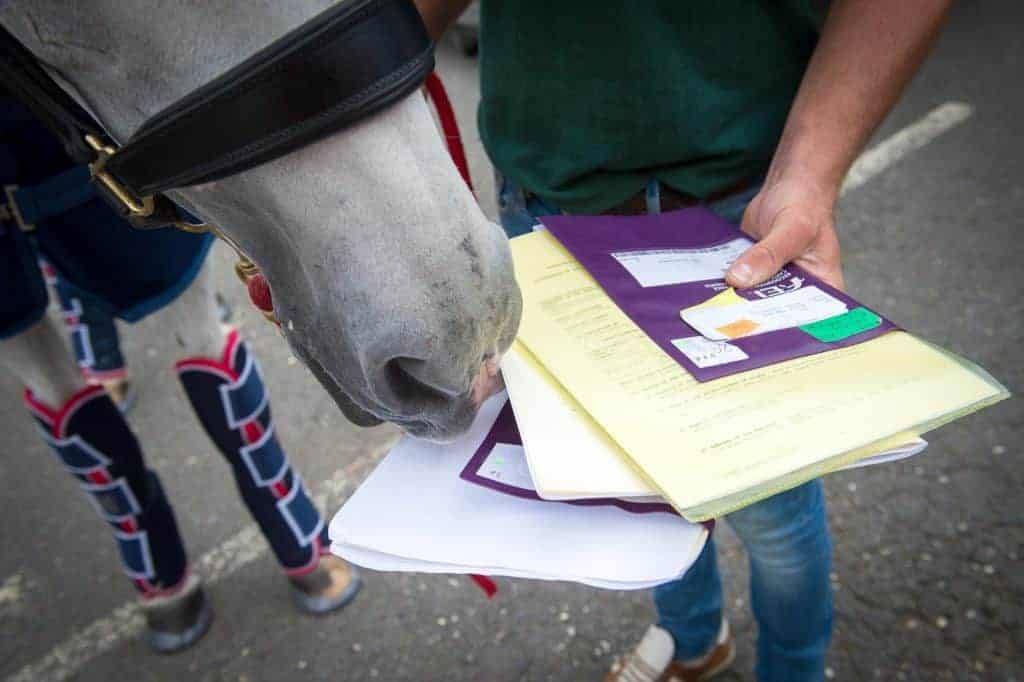Dressage Horse Detained After Positive Glanders Test
Sagacious HF is in extended quarantine in Miami pending the results of additional testing slated for Aug. 23.
Sagacious HF is in extended quarantine in Miami pending the results of additional testing slated for Aug. 23.

From 1995 to 2014, the OIE received reports of 54 disease events associated with international horse movement.

Find tips on managing and preventing a “perfect storm” of infectious disease spread at horse competition facilities.

Bornaviruses are known to cause a lethal form of encephalitis, called borna disease, in horses and sheep.

The OIE has described management “pillars” to keep most diseases at bay for high-health, high-performance horses.

The mainstays of biosecurity still center around good hygiene, diagnostics, quarantine, isolation, and traffic control.
A horse arriving from Europe produced.a “questionable” blood test result, but tested negative on a retest.

Implement appropriate biosecurity measures pre-emptively, as infectious disease is an ever-present risk with horses.

To mitigate the consequences of a disease outbreak, it is important to understand where the disease is spreading.

Equine cowbox infections are extremely rare, with only two other cases ever reported.

Of the 242 respondents, 175 have talked to their vet about a health issue they learned about in The Horse.
Lecture topics will include vaccinations, disease surveillance, foal nutrition, R. equi, biosecurity, and more.

Influenza continues to represent a serious infectious disease threat to humans and animals alike.
Cultures from both human and horse tested positive for S. equi spp zooepidemicus.

Farriers should practice smart biosecurity to prevent potential equine disease spread among properties.

Biosecurity isn’t just a consideration for show horses. Here are some tips on how to keep breeding stock disease-free.
Stay on top of the most recent Horse Health news with
"*" indicates required fields